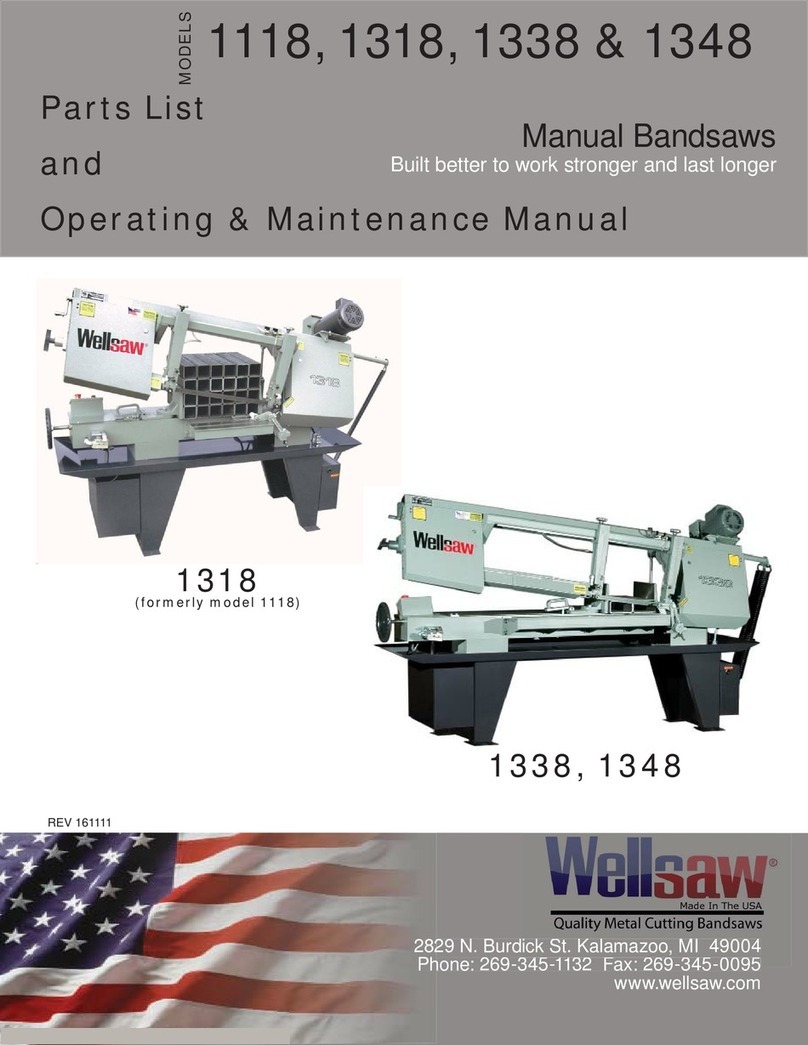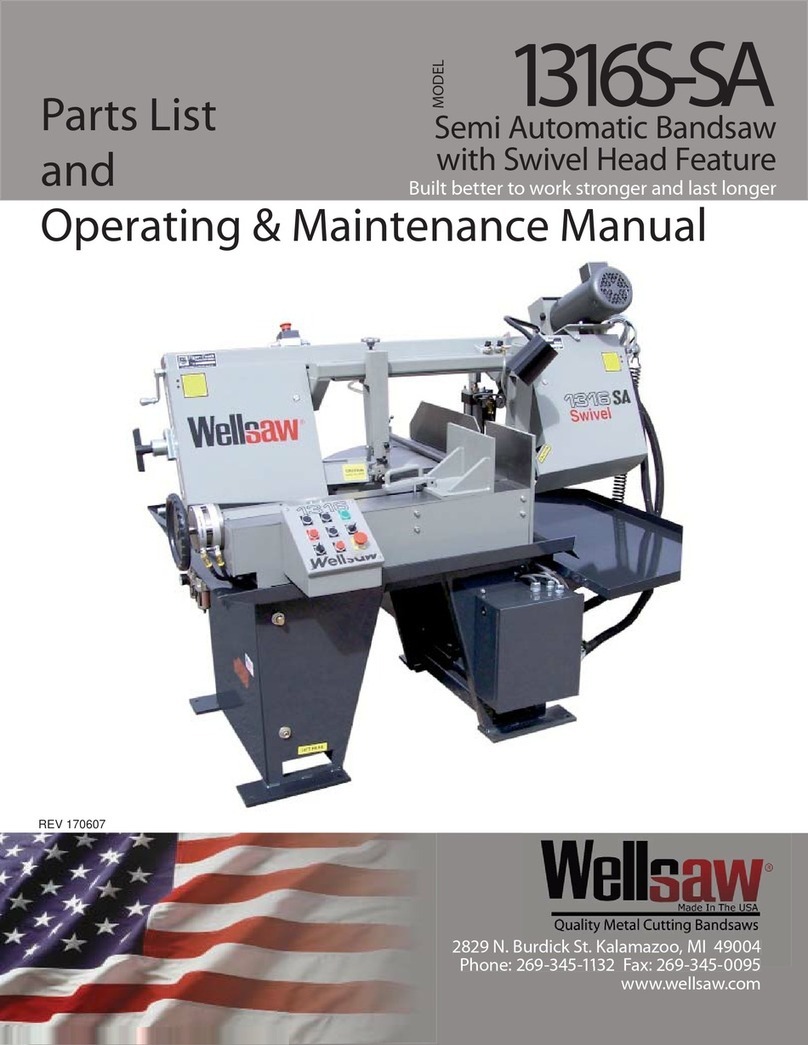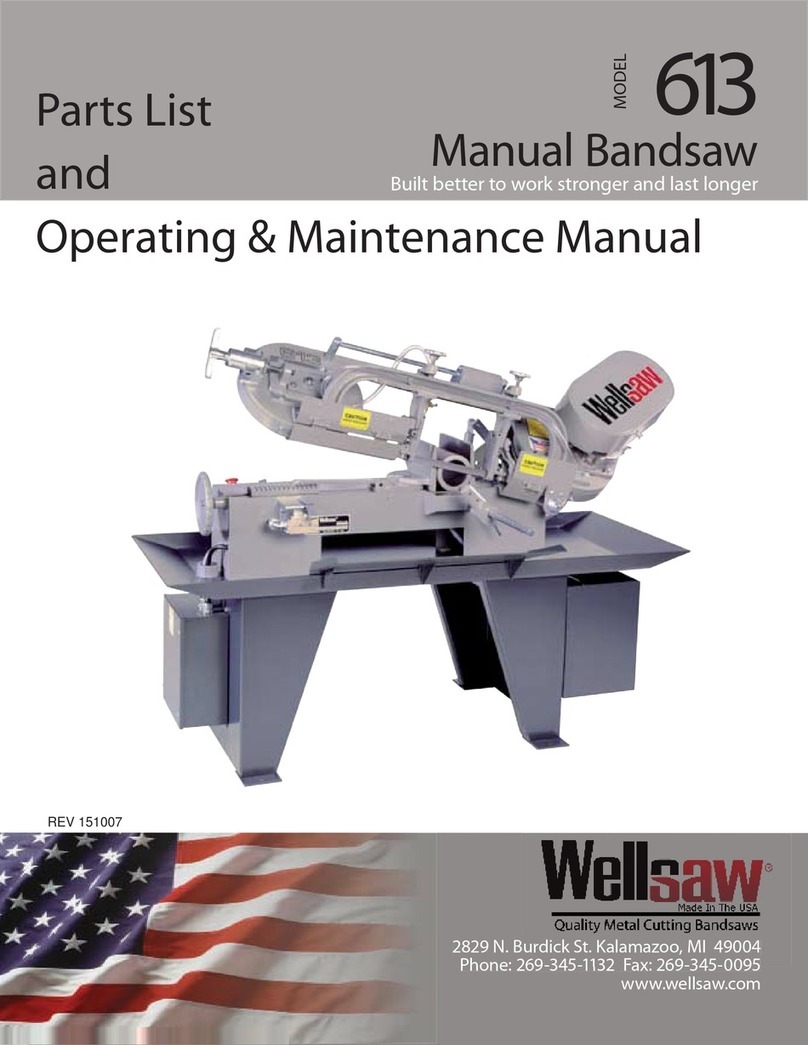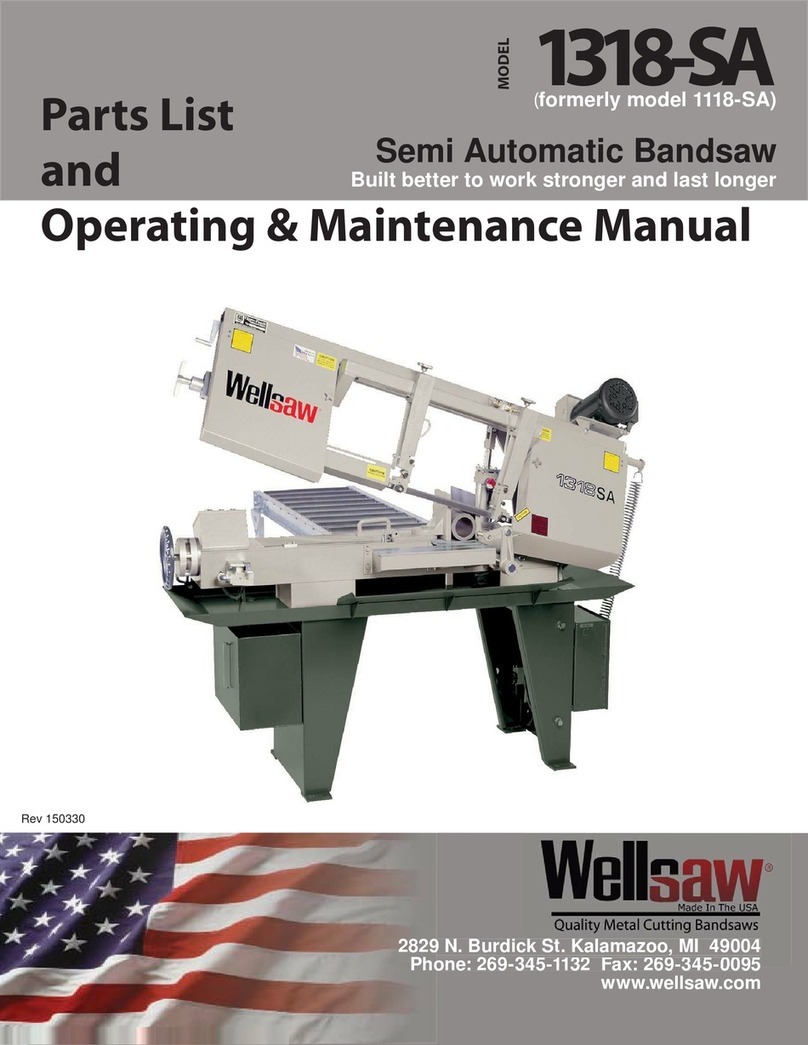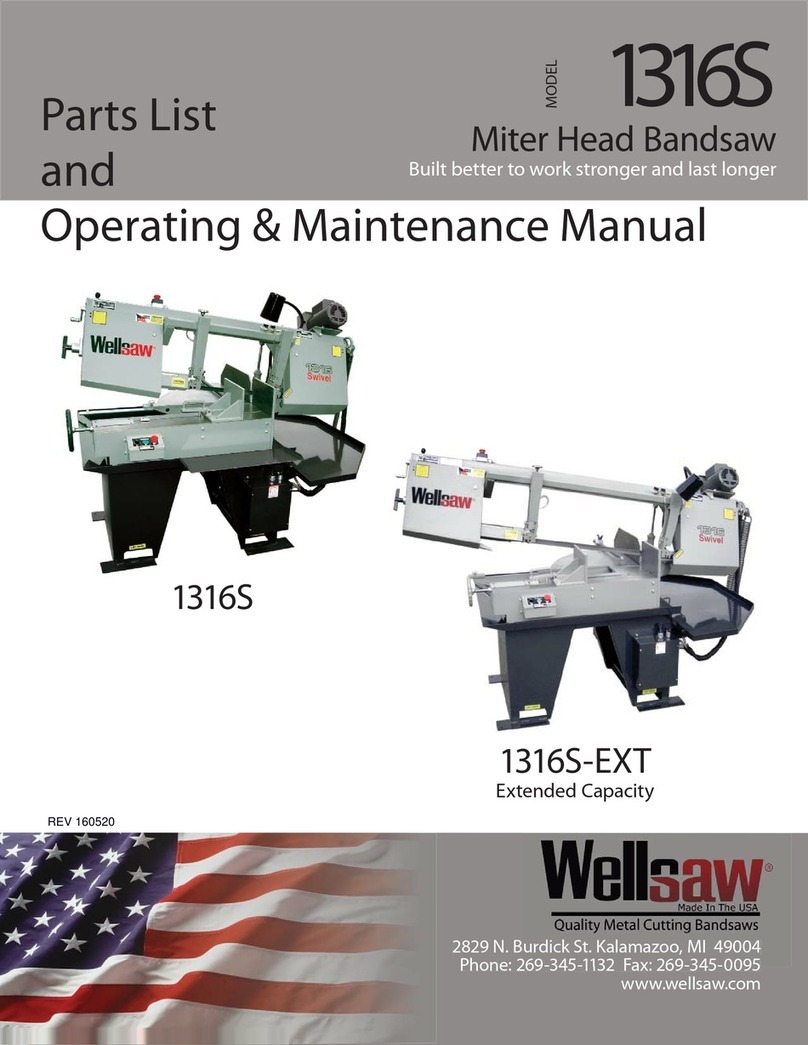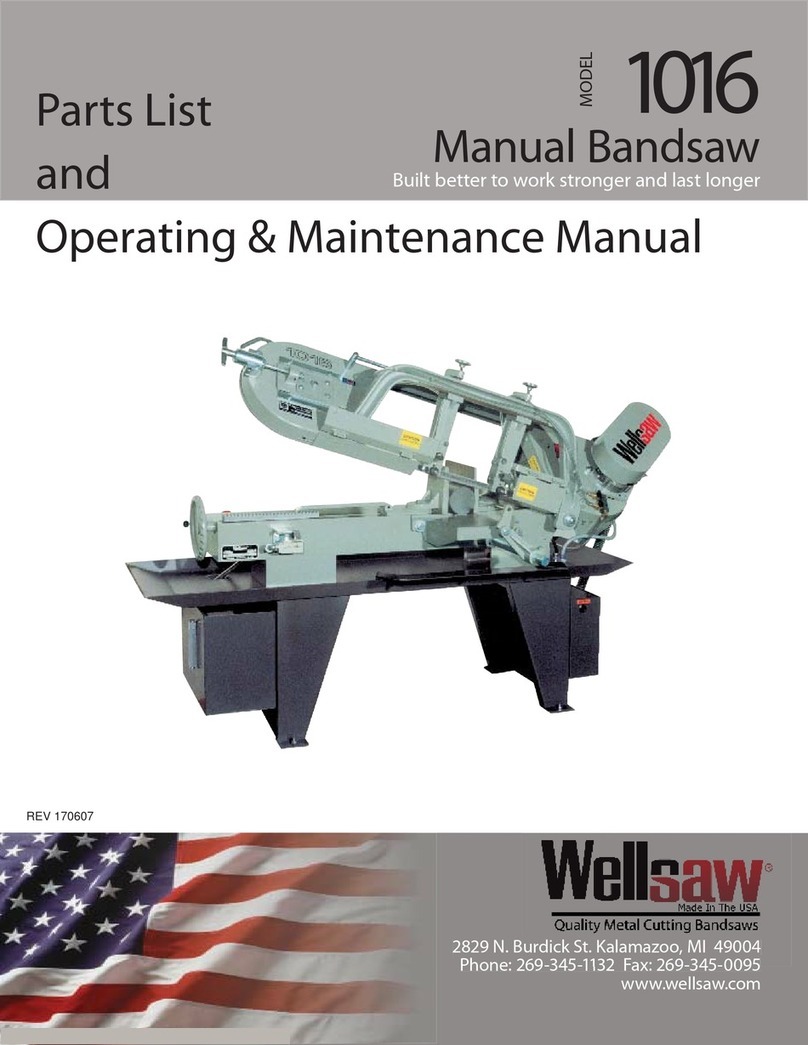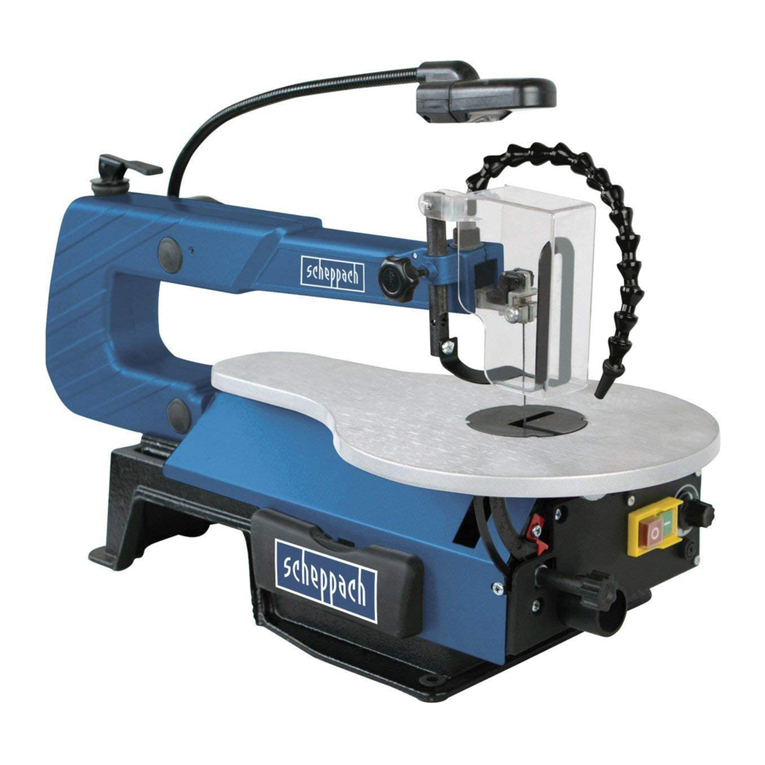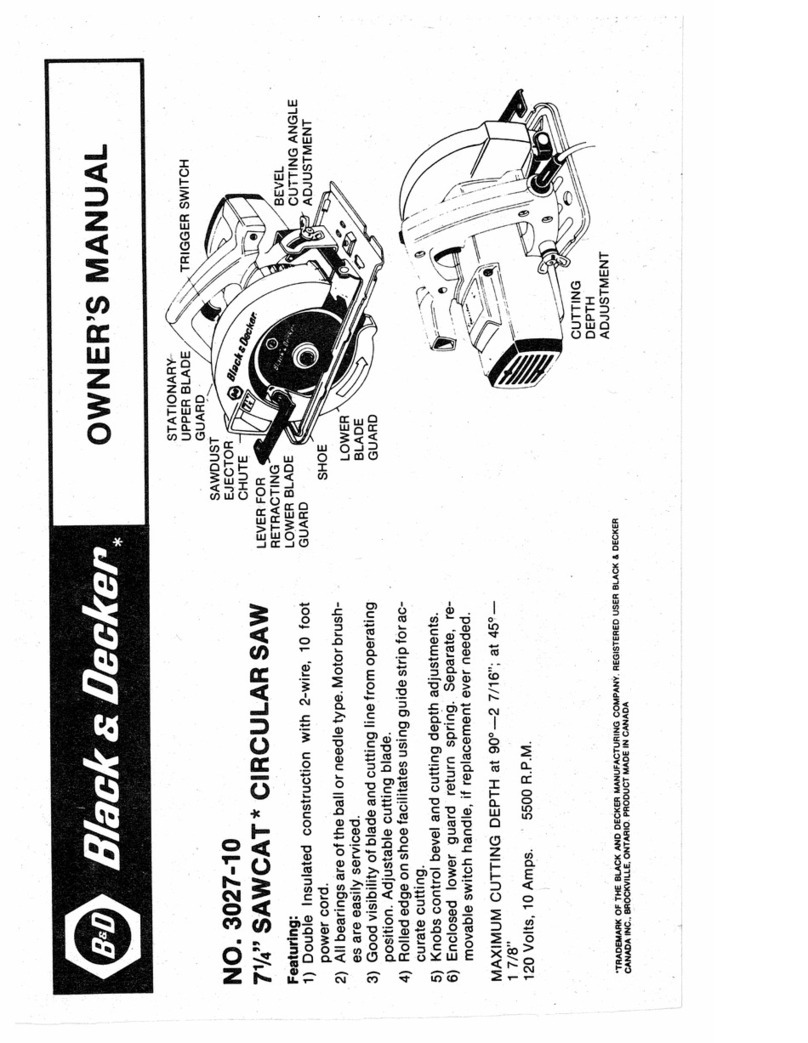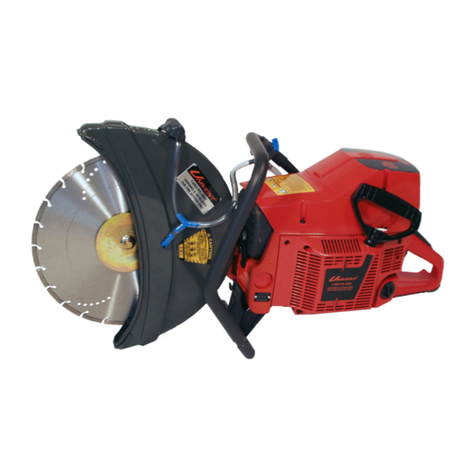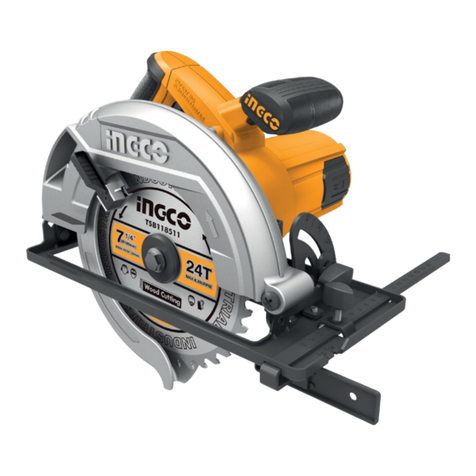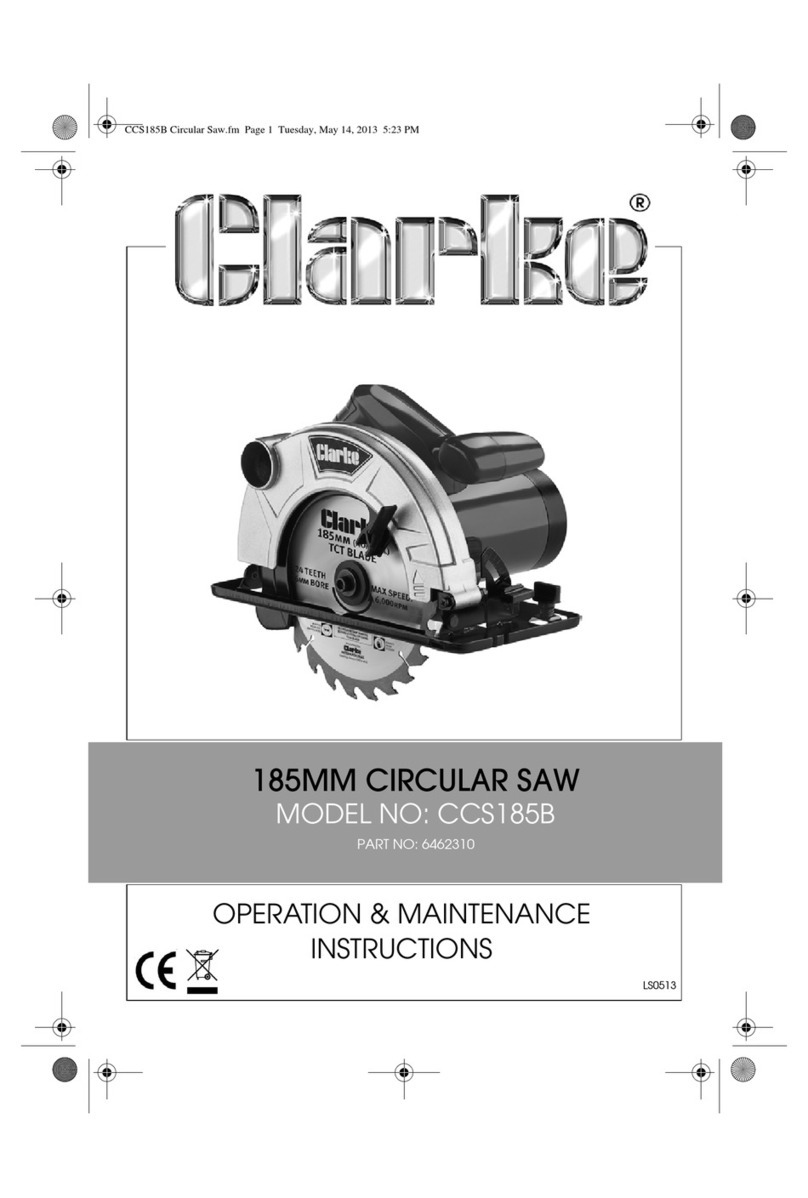
8
START UP
Upon receipt of machine, uncrate and check all parts. In case of
loss or damage, file Proof of Loss Claim with carrier.
Remove rust preventive from vertical posts using mineral spirits.
Coat with light oil.
CAUTION: Do not grease upright posts!
GENERAL INFORMATION
The cutting head, or frame of this machine is raised and lowered
by the hydraulic unit in the base.
Working in conjunction with this assembly are the electrical units
composed of the control cabinet, front mounted controls, limit
switches, blade micro-switch, pump motor (1 HP), and blade drive
motor (5 HP)
HYDRAULIC SYSTEM
1. PUMP - positive displacement, rotary type. Forces oil into
lifting cylinders.
2. TANK - should contain 10 gallons of Mobil DTE 25 Hydraulic
Oil or equivalent
3. CYLINDER & PISTON - steel cylinder and piston with neo-
prene cup.
4. SOLENOID VALVE - regulates flow of oil through line as blade
pressure increases and decreases, actuated by blade micro-
switch.
5. NEEDLE VALVE - governs discharge of oil from cylinder as
frame lowers.
ELECTRICAL SYSTEMS
1. LIMIT SWITCHES - Upper limit switch stops upward travel of
cutting head at predetermined height set by trip collar. Lower
limit switch stops blade motor at end of cut .
2. BLADE MICRO-SWITCH An automatic device is actuated
by pressure on the blade and controls the solenoid valve to
maintain constant downward blade force. It also activates an
indicator light on top of the front mounted controls.
3. PUMP MOTOR - 1 HP
4. BLADE DRIVE MOTOR - 5 HP "V" belt drive to gear case.
Standard speeds: 80 FPM, 135 FPM, 210 SFPM.
5. FRONT MOUNTED CONTROLS - push buttons for blade mo-
tor, feed, emergency stop.
OPERATING INSTRUCTIONS
1. Remove wheel covers and install blade. Be sure that teeth
are pointing toward the drive end of the machine. This is the
proper direction of blade travel through the cutting area.
2. Raise frame by pressing RAISE button which starts the hy-
draulic pump. When frame reaches a position so that the
blade is about 1" above stock to be cut, push STOP button
which will stop and hold the frame at this point.
3. Move upper set collar to desired height on control rod and
lock in position with thumb screw.
4. Place stock in approximate cutting position. Press LOWER
button to lower the frame. If more rapid traverse in lowering
the frame is desired, this can be accomplished by turning the
indicator head in a counter-clockwise direction. When blade is
about 1/ 8” above stock, press LOWER stop button, stopping
and holding the frame. Measuring from blade tooth, adjust
stock to exact cutting position and secure stock.
5. With stock in proper position for cutting and clamped, push
BLADE START button to start blade drive motor and then
push LOWER button, which energizes blade micro-switch
and solenoid valve circuit. The machine will then start its con-
trolled cutting action. The blade will automatically stop when
the frame reaches the lower limit switch.
6. When cutting begins, notice the action of the blade micro-
switch located in casting above the blade on the idle end
guide assembly.
In case of excessive feed, the tension of the spring is quickly
overcome. The excessive pressure on the blade raises the stem
linkage that operates the blade micro-switch which closes the so-
lenoid valve. This stops the downward travel of the saw frame.
As the cutting action of the blade removes material to relieve this
excessive pressure, the micro-switch will function and open the
solenoid valve for an instant until pressure again becomes exces-
sive. This can be readily noticed by the operator due to the jumpy
action of the saw frame exerting excessive pressure on the blade
as the solenoid valve opens and closes.
Decrease feed at indicator head until cutting and feed are equal-
ized. Insufficient feed is easily recognized as the blade will do very
little cutting, if any, due to the lack of cutting pressure.
When correct feed is being employed, the blade will cut steadily
and the micro-switch will function occasionally to open and close
the solenoid valve. The amber light on the top of the front mount-
ed control box indicates that the saw is feeding. When the solenoid
valve closes, the light goes out.
After a correct feed has been established, the position of the indi-
cator head should be noticed, and this location maintained while
cutting similar size and type material. Always keep the indicator
head WITHIN CUTTING LIMITS, as shown on dial, during actual
cutting operations.
We call your attention to the adjusting knob on the blade micro-
switch assembly. While it may be necessary at times to adjust the
spring pressure when radically different materials are to be cut, for
instance, from bar stock to thin wall tubing, the operator should not
make a habit of changing it casually.
As the spring is compressed, more pressure must be exerted
against the blade before the micro-switch functions. The micro-
switch spring controls the pressure against the blade and consid-
erable discretion should be used before making any change (See
Adjust Blade Micro-Switch, page XX)
During the cutting cycle, when frame is in downward travel, all op-
erations can be stopped immediately by pressing STOPor BLADE
STOP buttons or EMERGENCY STOP button. When in upward
travel, this can be accomplished by pressing the STOP button.
BLADE GUIDES
The blade guides are arranged to hold the blade in alignment both
vertically and horizontally.
Before making any adjustments, always try a new blade to be sure
that the old blade was not causing the difficulty (See Blade Guide
Alignment, page XX).
BLADE BRUSHES
Brushes should be cleaned frequently in kerosene and reversed to
take advantage of both rows of bristles.
For best results, replace worn, filled or sticky brushes with new
ones. In bolting brushes to angles, be sure wire bristles are bent
in the same direction as the blade travels.



